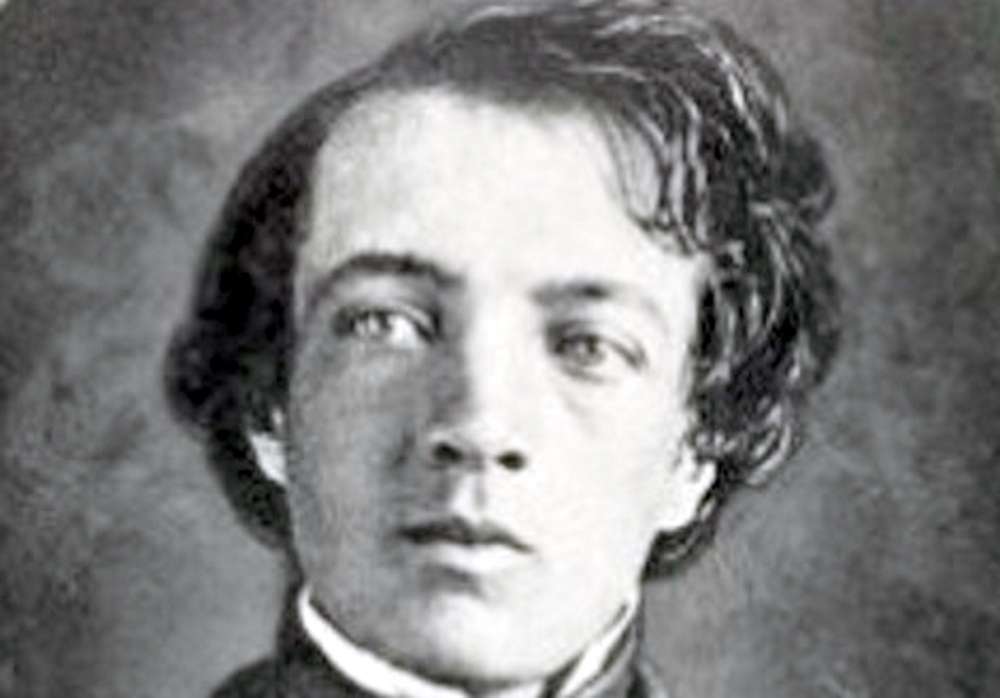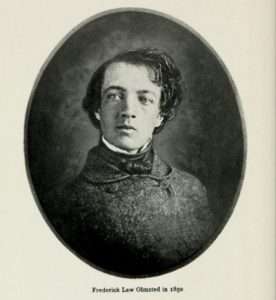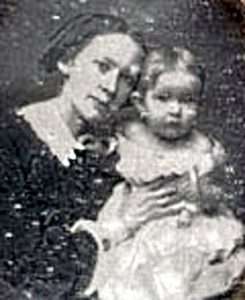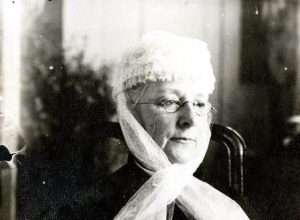Frederick Law Olmsted had played the field of pretty, well-to-do young ladies in 1851 when he decided it was time to get married. He was pushing 30. All his friends had settled down and his younger brother John had gotten engaged.
He would choose for his bride Emily Baldwin Perkins, granddaughter of the eminent preacher Lyman Beecher and niece of Harriet Beecher Stowe.
Her parents wanted the match. So did his. Their families, both prominent in Hartford, had known each other all their lives. Fred had courted Emily on and off for years. They were about to set a date when she dumped him.
Both Olmsted and the man she married became famous, but for very different reasons.
Frederick Law Olmsted, Late Bloomer
In 1851, Central Park was little more than an idea and the words ‘landscape’ and ‘architect’ had yet to be joined. Frederick Law Olmsted was an unmoored young man, having dropped out of Yale College, gone to sea and hated it, wandered on foot around England with his brother John and started to write a book.
He didn’t really have a job, but his wealthy father had bought him a farm on Staten Island, then a vast rural tract south of Manhattan. Olmsted had brief romances with several young women.
“He is in the direct want of a wife and would marry almost any body that would let him,” wrote his brother.
Frederick Law Olmsted admitted as much in a letter to a friend.
“I want somebody that I can much love and respect, whose tastes and feelings I shall be tender and regardful of,” he wrote. “How in this world am I ever going to find her?”
Tender, Sensible and Downright Good
In January 1851, he took up with pretty, well-educated Emily Perkins. They went to literary evenings and book clubs on his visits to Hartford. He took Emily in a ride in a horse-drawn cutter over the ice. He showed up at her family’s home at 9 a.m. Olmsted described her as ‘the most lovely and loveable girl’ with ‘the most incomparably fine face I ever saw.’
But did he damn her with faint praise when he called her a ‘real tender sensible downright good woman’?
They were engaged in the summer of 1851, and she wanted to set a date for the fall. But her betrothed hesitated because he had to harvest his crops.
Then she wrote him a strange letter complaining about the annoyance of buying furniture and picking out carpet.
Shortly after their engagement, Emily’s mother sent Frederick Law Olmsted a letter asking him to break off the engagement ‘because of a ‘revulsion of feeling in E.’ Olmsted went to Hartford to remonstrate. Emily wouldn’t see him and her mother assured him it was off.
His father wrote to the old family friend Sophia Stevens: “Pray tell me what it is makes Fred so happy since his disappointment, as it is calld? He seems like a man who has thrown off a tremendous weight. Can it be that he brot it about purposely?”
Finally, Married
Emily Perkins was sent to Worcester, Mass., where she met a promising young clergyman named Edward Everett Hale. They would marry and have six children who survived to adulthood. Two, Ellen Day Hale and Philip Leslie Hale, became prominent artists. Edward Everett Hale won fame as an author, most notably of the story, The Man Without a Country. He cheated on Emily for years with a woman named Harriet Freeman.
Shortly after Emily Perkins jilted him, Frederick Law Olmsted’s brother John married Mary Perkins, who was no relation to Emily. At the same time John began coughing up blood. He died of tuberculosis six years later.
That was in 1857, when Frederick Law Olmsted had finally found his calling. He was supervising the construction of Central Park in New York City. Olmsted and Calvert Vaux had won the design contest for the park.
Though he was frenetically busy, he looked after his sister-in-law and her three children, first installing them at his Staten Island farm and then moving them closer to his own home in New York.
Finally, at the age of 37, Frederick Law Olmsted married his brother’s widow. They had two children who survived to adulthood. He adopted Mary’s three children. Sons John and Frederick carried on their father’s landscape architecture business after his death.
This story was updated in 2022.



